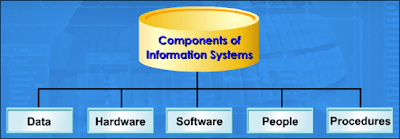
Photo by Glenn Carstens-Peters on Unsplash
Introduction to System Analysis
A disciplined process for creating high-quality enterprise information systems
What is systems analysis and design?
A step-by-step technique for producing high-quality information systems is known as systems analysis and design. Order processing, inventory control, human resources, accounting, and other corporate tasks are all supported by information systems, which mix technology, people, and data.
Some information systems handle routine day-to-day tasks, while others can assist managers in making better decisions, identifying market trends, and revealing patterns that may be hidden in stored data.
What does a systems analyst do?
A systems analyst is a valuable component of the IT department team who assists in the planning, development, and maintenance of information systems. To be a systems analyst, however, certain talents are essential; analysts must be good communicators with strong analytical and critical thinking abilities.
Because systems analysts translate business requirements into IT projects, they must be both business smart and technically skilled, as well as be equally at ease with managers and programmers, who may have opposing viewpoints at times.
Let’s dive into information systems
A system is a collection of interconnected components that produce specified outputs. Specialized systems, for example, transport Internet traffic, manufacture microchips and control complicated entities such as the Hubble Space Telescope.
A mission-critical system is one that is crucial to the day-to-day operations of a business. A mission-critical system, such as an order processing system, is one that the company cannot function without.
Every system necessitates input data. A computer, for example, receives data when a key is pressed or a menu command is selected. Data in an information system is made up of basic facts that serve as the system's raw material. Data that has been turned into output that is beneficial to users is referred to as information.
As depicted in the image below, an information system consists of five major components: hardware, software, data, processes (procedures), and people.

Everything in the physical layer of the information system is referred to as hardware. System software oversees the hardware components, whereas application software supports day-to-day business activities.
Data is the raw material from which an information system generates relevant information. Processes explain the duties and functions that users, supervisors, and IT staff members execute. People from both within and outside the firm engage with a system.
Anticipate the Friday article for part 2!
Follow us on other platforms with the links below for steady updates
twitter.com/eliteagency0?s=09 Instagram: instagram.com/eliteagency0
For more information and enquiry you can reach us on: WhatsApp wa.me/message/LU52BWFLUKOCH1
or send us a mail at eliteprincipalities@gmail.com

